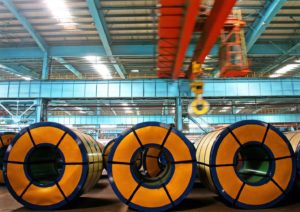For improved operations and optimized energy efficiency in many small healthcare clinics, retrofitting is required via an upgraded building management system (BMS). However, it’s not as painful of a process as it sounds; as a matter of fact, for many of us, a shot hurts worse! An easy four-step timeline of upgrades can create a simple and effective method for increasing energy efficiency, which produces sustainable, substantial, and visible results.
Step One: Within the Next Two Months
The best place to start, of course, is always with a plan. If you’re a healthcare provider looking to improve the energy efficiency of your small facilities, you should begin by creating a roadmap to improvement through a “test case.” Review your energy usage statistics and pick the single small clinic with the highest energy costs, then install in that clinic the application-specific room controllers I discussed in my last blog. Then you can sit back, relax, let these room controllers do their job, and assess how well they’re doing by monitoring changes in energy costs over the course of a few months.
Step Two: Within the Next Six Months
The previous step’s test case should provide sufficient data about the impact of the room controllers. Now that you know how much savings to expect, you can better target the small clinic locations that are the worst offenders for inefficiency. Install these advanced room controllers in these locations as well. After they’re up and running, you should begin to see a decrease in your overall energy costs and an improvement in your patient and staff comfort.
Step Three: Within the Next Year
A year allows for some longer-term strategies to be put in place. To get an idea of how your facility is doing, consider tracking energy consumption in various locations to get a sense of how the technology in these advanced room controllers have impacted energy consumption. If you’re happy with what they’ve done and want to take the next step, you can also consider contacting an energy management company to look at options for installing a more comprehensive building management system (BMS) like Schneider Electric’s SmartStruxure Lite solution, which is specifically designed for buildings of a smaller footprint. Or, for more advanced reporting and analytics, Schneider Electric’s SmartStruxure solution may be your answer. A full BMS, I’ve discussed in my previous blog, can provide benefits above and beyond what the application-specific room controllers are capable of, and can easily integrate with other building controls already installed.
Step Four: Within the Next Two Years
In addition to all these steps, you should make a long-term plan for how to deal with any new building acquisitions. As it’s likely that the trend toward small healthcare clinics will continue, large providers will need to come up with a smart and sustainable strategy into the future. In addition, devote some time to tracking the improvements to patient satisfaction and staff productivity across your facilities since installation.
Though inefficiencies in small healthcare facilities can be a big problem, as noted in this informative sister blog, fixing them doesn’t have to be. Retrofitting facilities with smart energy management for retail healthcare facilities is a convenient step toward decreasing costs and improving energy usage and patient care, which can set the stage for even greater improvements in the future.
Learn so much more about this technology in my brand new white paper – free to you!
Take some time to chat with me; I’d love to hear your thoughts on this four-step plan for small clinic efficiency below!



Conversation
I enjoyed reading this article Jaimie as I also believe clinics, with their changing occupancy needs, are a great fit for SmartStuxure Lite. As with anything new, the “scale in” approach you preach is typically the most effective for the long-haul.
Hi Brett, thanks for your thoughts! Yes, for sure taking steps to scale your approach as your building needs require it is the smart choice. Fortunately, SmartStruxure Lite allows you to do that with ease. I appreciate your comment!